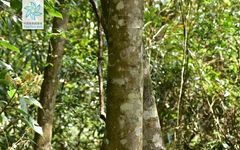Disease Inquiry, Health Guidance, Classic Health Preservation, Traditional Chinese Medicine and Herbs, No Need to Seek Help When Sick
Herb Name: Cinnamon (Rou Gui)
Alias: Jun Gui
Harvesting and Processing: Harvested in autumn, dried in the shade
Medicinal Part: Bark
Origin: Guangxi, Guangdong
Family: Lauraceae
Original Plant: Cinnamon (Cinnamomum verum)
Plant Description: Evergreen tree

Height: 12 to 17 meters. Bark is gray-brown, aromatic, and young branches are slightly quadrangular.
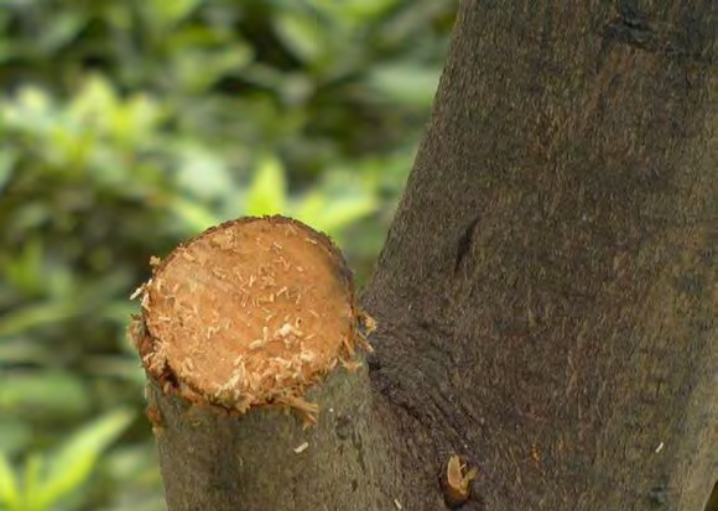
Leaves are alternate, leathery; elongated oval to nearly lanceolate, 8 to 17 cm long, 3.5 to 6 cm wide, with a pointed tip and blunt base, entire margin, green and glossy above, gray-green and covered with fine hairs below; with 3 basal veins, prominently raised below, and fine veins parallel; petiole stout, 1 to 2 cm long.
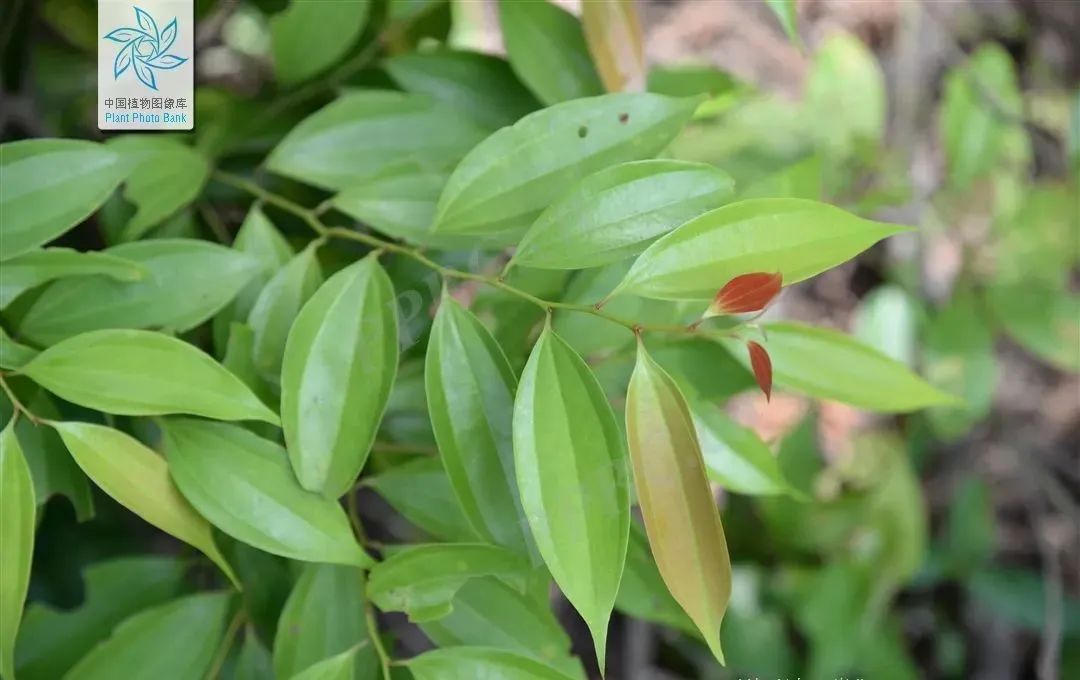
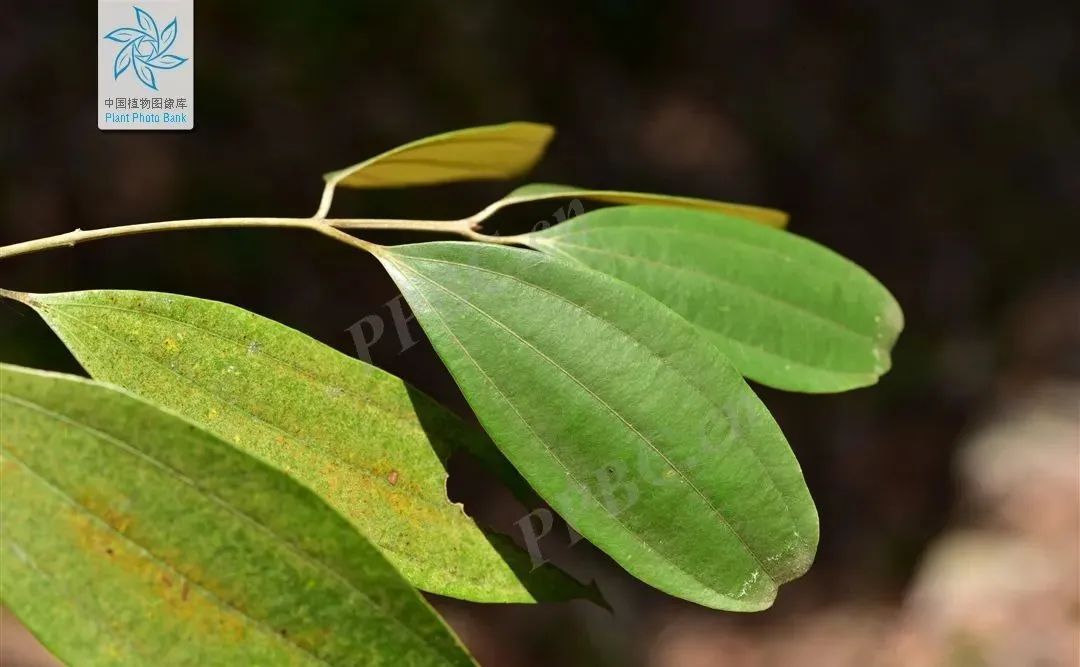
Inflorescence is axillary or near the apex, 10 to 19 cm long, covered with short fine hairs; flowers are small, about 3 cm in diameter; pedicel about 5 mm long; flower tube about 2 mm long, with 6 lobes, yellow-green, oval, about 3 mm long, densely covered with short fine hairs inside and outside; 9 developed stamens, in 3 whorls, anthers are oblong, 4-celled, lobed, with no glands on the filaments of the outer 2 whorls, anthers facing inward, the 3rd whorl of stamens facing outward, with 2 glands at the base of the filaments, and 1 whorl of degenerated stamens inside, anthers heart-shaped; the pistil is slightly shorter than the stamens, ovary oval, 1-celled, with 1 ovule, style slender, nearly equal in length to the ovary, stigma slightly disc-shaped. Flowering period is from May to July.
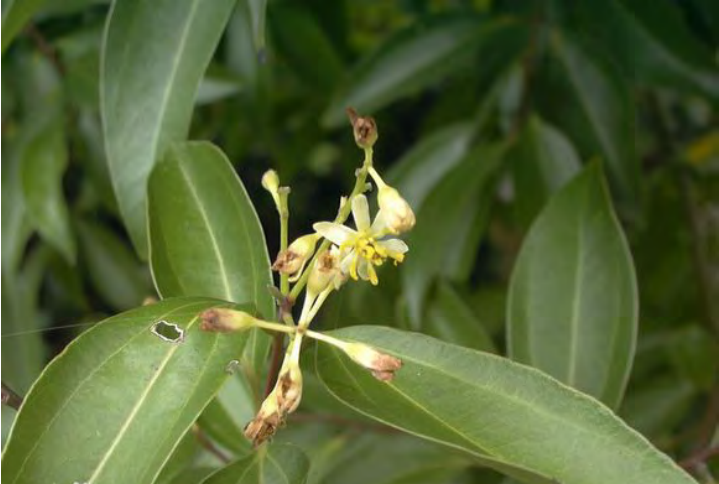
Fruits are oval or obovate, slightly flattened at the tip, dark purple, about 12 to 13 mm long, with persistent flower remains. Seeds are elongated oval, purple. Fruit period is until February to March of the following year.
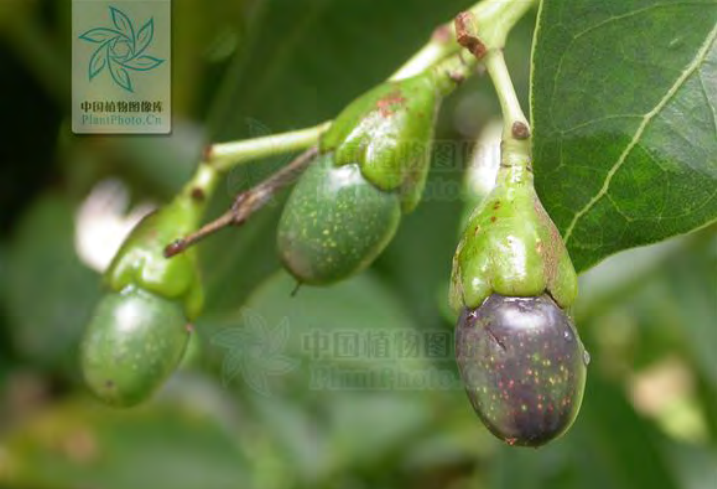
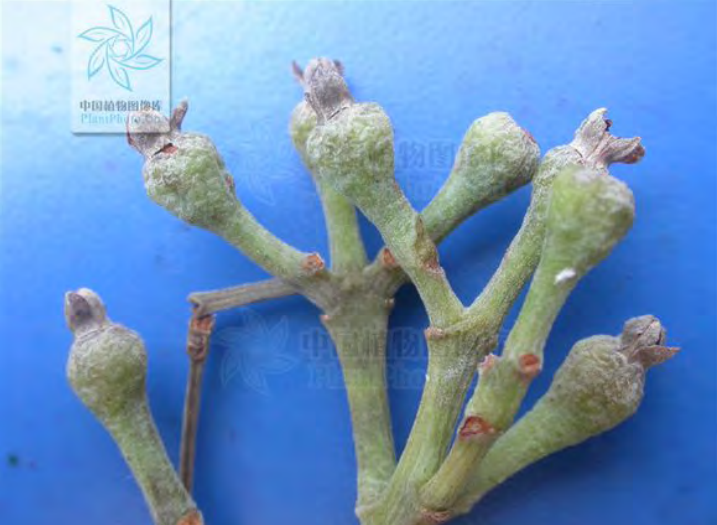
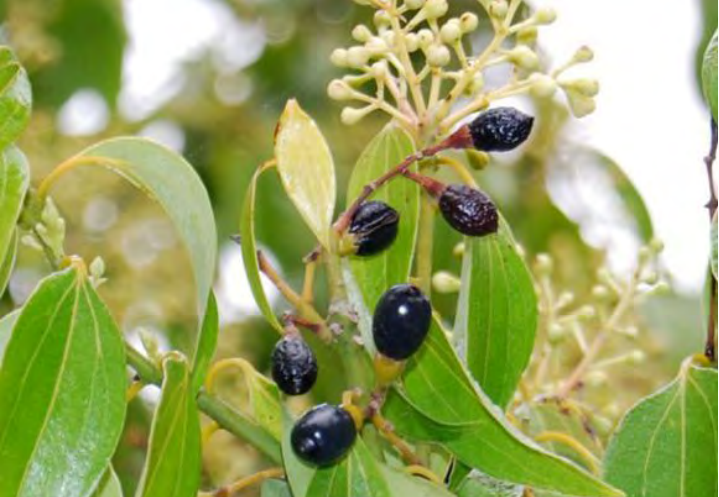
Cinnamon Characteristics: The product is in a tubular or rolled shape, 30 to 40 cm long, width or diameter 3 to 10 cm, thickness 0.2 to 0.8 cm. The outer surface is gray-brown, slightly rough, with irregular fine wrinkles and transverse raised pores, some may show gray-white spots; the inner surface is reddish-brown, slightly flat, with fine longitudinal lines, and shows oily marks when scratched. It is hard and brittle, easily broken, with an uneven fracture surface, the outer layer is brown and rough, while the inner layer is reddish-brown and oily, with a yellow-brown line between the two layers. It has a strong aroma, with a sweet and spicy taste.
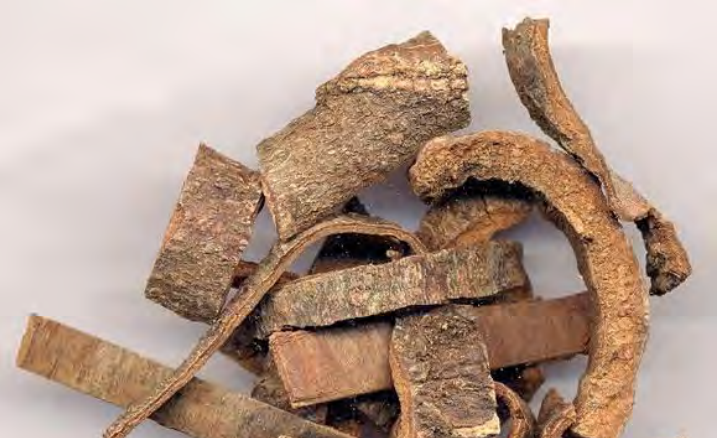
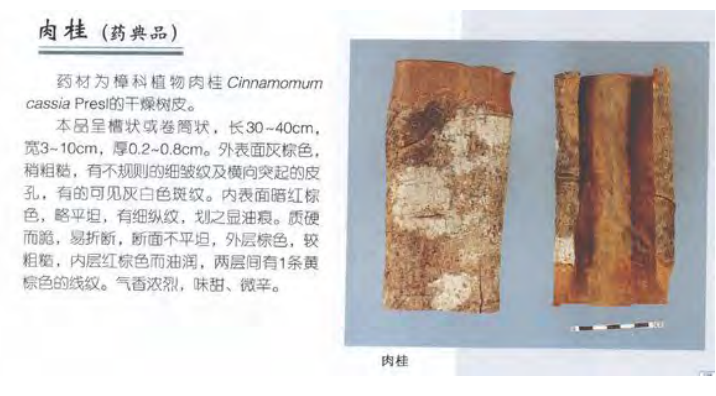
Gui Tong (Official Cinnamon): Obtained from the bark of 5 to 6-year-old young trees or the bark of old tree branches, not pressed, naturally rolled into a tubular shape.
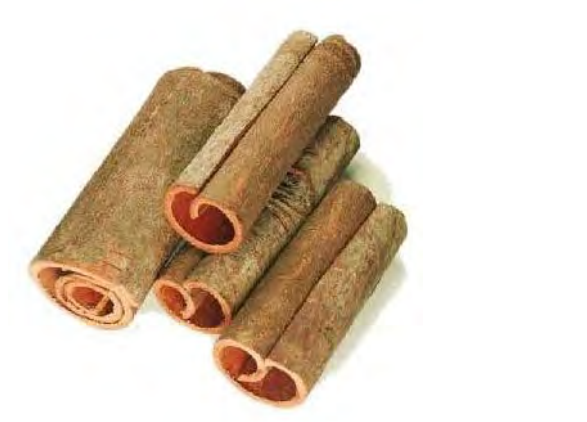
Qi Bian Gui: Obtained from the bark of trees older than 10 years, with both ends shaved to an angle, exposing the cinnamon heart, pressed between wooden concave and convex boards, forming a shallow groove that curves inward on both sides.
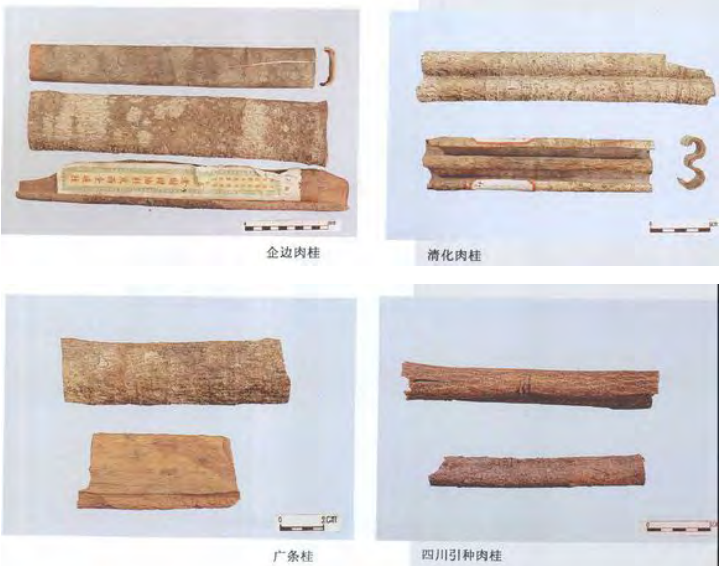
Ban Gui: Obtained from the lower part of old trees near the ground, pressed between wooden clamps, dried until 90% dry, stacked and pressed for about 1 month until completely dry, forming a flat board. Shows oily marks when scratched. It is hard and brittle, easily broken, with an uneven fracture surface, the outer layer is brown and rough, while the inner layer is reddish-brown and oily, with a yellow-brown line between the two layers.
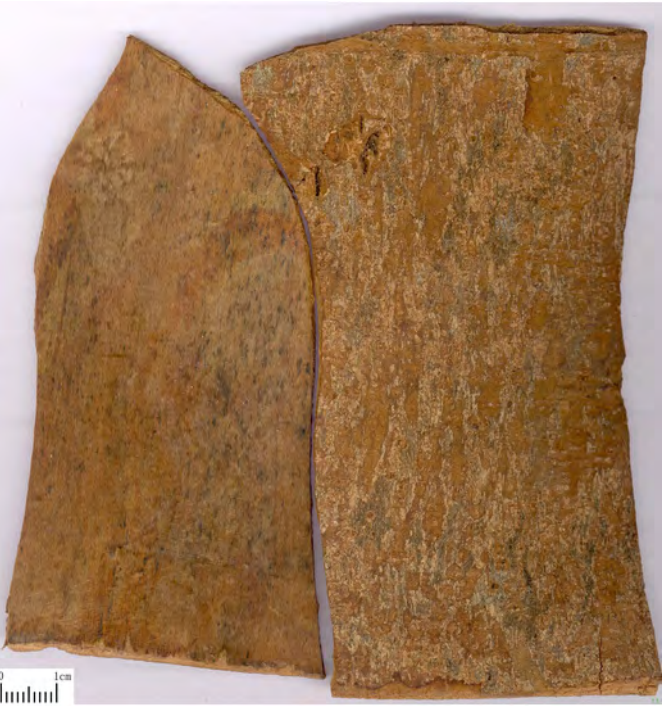
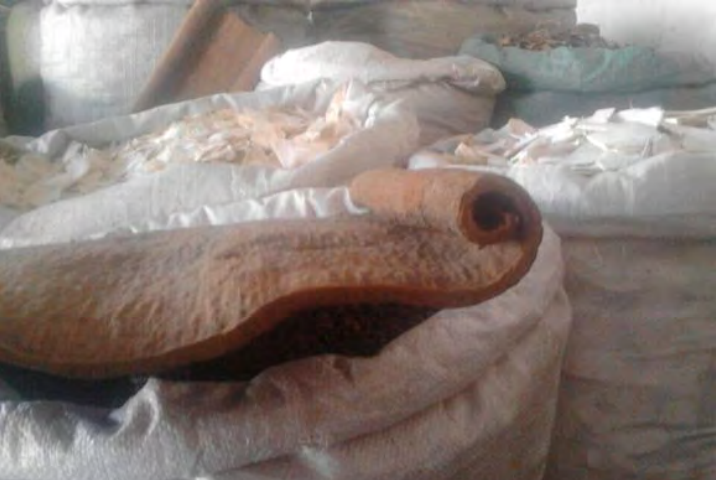
The best cinnamon is characterized by being unbroken, heavy, with fine outer skin, thick flesh, purple color on the fracture surface, high oil content, strong aroma, sweet and spicy taste, and little residue when chewed. The sweeter and spicier, the better.
Cinnamon Properties:
[Superior in the Classic of Herbal Medicine, Jun Gui, taste is spicy and warm. It treats all diseases, nourishes the spirit, harmonizes colors, and is the foremost envoy among all herbs. Long-term use lightens the body and prevents aging, giving a radiant complexion, and maintaining youthful charm.]
Taste: Sweet, Spicy; Aroma: Fragrant; Nature: Warm; Enters the Liver Meridian (Zuojueyin). Warms the liver and blood, breaks stagnation and dissipates symptoms, expels dampness and cold from the waist and legs, alleviates abdominal and flank pain.
The liver belongs to wood and stores blood, and blood carries the energy of wood, which is warm in nature. Warm energy rises to the left, yang harmonizes and spreads, accumulating into heat, which transforms into heart fire. The warmth of wood is half-rising yang, and the heat of fire is fully floating yang. People know that qi is yang, but do not realize it contains yin essence; they know that blood is yin, but do not realize it contains yang energy. The warmth in blood is the source of transforming fire into heat; when warm energy is sufficient, yang is strong and the person is healthy; when warm energy is weak, yin is strong and the person is ill. When yang recovers, life is restored; when yin prevails, death occurs. Life and death differ in beauty and ugliness, and yang and yin differ in value and worth. The movements of insects are known to signify life and death; the lower classes do not understand the value of yin and yang, and the source of calamities throughout history arises from the undervaluation of yang and overvaluation of yin.
To seek longevity, one must support yang energy. The method to support yang is to cultivate it within essence and blood, nurturing its root. If the root of yang is weak, there is only deficiency within the water and wood of the fetus, and there is no surplus. There are no cases of excessive warm energy causing illness. The liver’s heat-related diseases arise from insufficient vitality, where warm energy is depressed and generates wind dryness, not from strong yang and weak yin.
Cinnamon warms and smooths, replenishing the warm energy in the blood. The fragrant sweetness enters the earth, while the spicy sweetness enters wood; the spicy aroma is good at resolving stagnation, thus it is best at relieving liver and gallbladder depression.
The taste of metal is spicy, and the taste of wood is sour; spicy and sour are the stagnation of metal and wood, leading to lung and liver diseases. The nature of metal is to gather, while the nature of wood is to disperse. Metal follows the skin, thus it gathers, while wood is straight, thus it disperses. Therefore, spicy leads to lung diseases, and sour leads to liver diseases due to their stagnation. The lung benefits from sourness to gather, while the liver benefits from spiciness to disperse. When the lung receives sourness, it follows the descent, and the spicy taste gathers; when the liver receives spiciness, it straightens and disperses the sour taste. There are opposites that complement each other; this is one such case. The liver and spleen relax, warm energy rises and transforms into yang spirit, which governs the yang spirit, and the yin evil has no power, thus the path to prolonging life is nothing more than this.
All syndromes of meridian obstruction, organ blockages, joint stiffness, and abdominal pain are due to the decline of warm energy and coldness in the blood. This leads to upper and lower diarrhea, the nine orifices not being maintained, purple-black clots, and decay. Women’s menstrual and postpartum diseases all fall under this category. All should use cinnamon; no other herbs can replace it.
Cinnamon bark also primarily acts on the exterior, but it is heavy and thick, thus it acts internally within the exterior. Its strength reaches directly to the organs, differing from cinnamon twigs which primarily act on the meridians. The bark is used.
[Origin] Produced in Annam and regions such as Yunnan and Guangxi in China, the tree is tall, and the bark is used in medicine.
[Nature and Taste] Spicy, sweet, very warm, with slight toxicity.
[Indications] Cinnamon is a key warming and tonifying herb, primarily supporting fire and assisting yang, warming the interior and expelling cold, capable of guiding fire back to the source, treating upper heat and lower cold, breaking through deep cold and stubbornness, treating cholera and cramps, abdominal pain, hernia, and various pains in the heart and abdomen. [Ancient Texts] It supplements the insufficiency of the Mingmen (Gate of Life), enhancing fire and dispelling yin.
[Elements] It supplements the insufficiency of the lower jiao, treating deep cold and stubbornness, expelling wind-cold from the exterior, and treating spontaneous sweating due to exterior deficiency. It is contraindicated in spring and summer, and for lower abdominal pain in autumn and winter. Without this, it cannot stop.
[Wang Ang] Wood becomes dry with cinnamon, and it can also suppress liver wind and support spleen earth, treating spleen deficiency with poor appetite, excessive dampness, and diarrhea, tonifying labor and unblocking the meridians.
[Ling Tai] It supplements and assists yang energy, expelling yin evil.
[Dosage] Generally 3 to 10 grams.
[Contraindications] Avoid raw scallions, resin, and fire roasting; use cautiously in cases of yin deficiency with internal heat, dry mouth, and few fluids. For poisoning from wood fruits or melons, and for closed-mouth Sichuan pepper poisoning, using cinnamon decoction can resolve it. Cinnamon is generally used raw for greater potency. It is attributed to the fire of the earth, entering the blood, but Zhang Zhongjing used it for its qi transformation, not for blood transformation. Cinnamon guides heart fire down to interact with water, requiring Fu Zi (Aconite) to invigorate kidney yang to move its qi; this is the ability of cinnamon to transform qi, hence the need for Fu Zi.
[Processing] Remove impurities, scrape off the rough skin, and brush off the dust to obtain it. Cinnamon is very spicy and very warm; although it has a metal flavor, it is essentially of wood and fire nature, thus it primarily enters the heart and liver blood, assisting the source of blood transformation. Cinnamon bark can also ascend. Zhang Zhongjing’s Revive Pulse Decoction uses cinnamon twigs to enter the heart and assist fire to transform blood.
[Rong Chuan] Cinnamon has a thicker taste than twigs, and its aroma is more concentrated. It is the ultimate of wood; very spicy means very warm, capable of enhancing heart fire, as it is a specialized herb for generating fire from wood. In fact, it is a warming liver product. The liver is the mother of the heart; if it is deficient, it should be supplemented.
[Ni’s Note] Generally, cinnamon twigs are used for arterial circulation issues, capable of promoting yang and reaching the exterior.
[Appendix] Cinnamon heart primarily supplements yang, invigorates blood, treats all wind diseases, supplements the five labors and seven injuries, opens the nine orifices, benefits joints, enhances vision, warms the waist and knees, breaks phlegm and stagnation, dispels blood stasis, treats wind bi and joint contraction, reconnects tendons and bones, and generates muscle.
[Ri Hua] It treats nine types of heart pain, unbearable abdominal cold pain, cough with obstructed qi, numbness in the feet, stops diarrhea, kills three worms, treats nasal polyps, breaks blood stasis, and regulates menstrual closure, and retains the placenta.
[Zhen Quan] It guides blood to transform sweat and pus, internally expelling abscesses, and treating obstruction and fullness in the abdomen.“
[Processing] Remove impurities and rough skin. Crush before use.
[Nature and Taste] Spicy, sweet, very warm.
[Meridians Entered] Enters the Kidney, Spleen, Heart, and Liver Meridians.
[Functions and Indications] Supplements fire, assists yang, guides fire back to the source, disperses cold, stops pain, invigorates blood, and unblocks the meridians. Used for impotence, cold in the uterus, cold pain in the waist and knees, kidney deficiency causing wheezing, yang deficiency dizziness, red eyes and sore throat, cold pain in the heart and abdomen, deficiency cold vomiting and diarrhea, cold hernia, and menstrual closure, dysmenorrhea.
[Dosage] 1 to 4.5 grams.
[Caution] Use cautiously in those with bleeding tendencies and pregnant women; not suitable for use with red resin.
[Storage] Store in a cool, dry place, tightly sealed.
Note: This article is for reference only; please follow medical advice for specific treatment and medication!This public account is only for academic exchange.
Want to learn more about Traditional Chinese Medicine, Chinese herbs, herbal remedies, and folk prescriptions? ▼ Click the card below ▼ to inquire!
For example: back pain, gynecology, andrology, kidney tonification, lumbar disc herniation, back pain, leg pain, knee pain, cervical spondylosis, liver disease, stomach disease, constipation, frequent urination, diarrhea, protruding abdomen, dysmenorrhea, breast hyperplasia, postpartum care, acne, gray hair, hair loss, skin diseases, age spots, aging, yin deficiency, cold, cough, fever, insomnia, stones, pharyngitis, sore throat, headache, toothache, snoring, oral ulcers, bad breath, rhinitis, tinnitus, eye diseases, thyroid issues, dandruff, athlete's foot, hemorrhoids, cold hands and feet, rheumatism, night sweats, cerebral hemorrhage, hypertension, diabetes, asthma, heart disease, cardiovascular diseases, fatty liver, gout, dementia, varicose veins, qi deficiency, blood deficiency, calcium deficiency, weakness, obesity, pediatric diseases, slim legs, slim waist, dampness, strengthen spleen, hiccups, body odor, cramps, smoking cessation, meridians, Chinese patent medicines, foot baths... and more.
Thank you for sharing, click to see more, and good luck!

